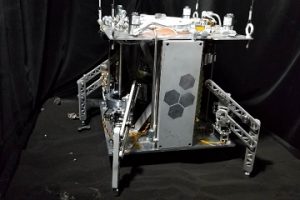Back to the Future: Asteroid Mining
Think steam power is so 19th century? Don’t be too sure. A project involving NASA, the University of Central Florida, and Honeybee Robotics in California has developed a prototype asteroid explorer propelled by steam. Called WINE, for the World Is Not Enough, it’s the first prototype to demonstrate it can mine water by heating the asteroid’s regolith, or soil, and then use the water to generate steam for a propulsion system, according to Discover magazine.
©Honeybee Robotics
Designed to work on smaller bodies in the asteroid belt that have water and low gravity, the explorer would generate enough power to hop several kilometers at a time. WINE’s steam propulsion is also powerful enough to reach escape velocity on a small asteroid, permitting exploration of other space rocks. Power for the first stop’s mining and steam-making activities would come from solar panels or, if the asteroid is too far from the sun, radioisotope heaters.
This article, written by chief correspondent Thomas K. Grose, originally appeared in the First Look section of the March 2019 issue of ASEE’s Prism magazine. Click HERE for the UCF news release announcing the discovery.
Filed under: Special Features
Tags: ASEE Prism magazine, asteroid mining technology, Honeybee Robotics, NASA, Robotics, space exploration, spacecraft, steam power, University of Central Florida









